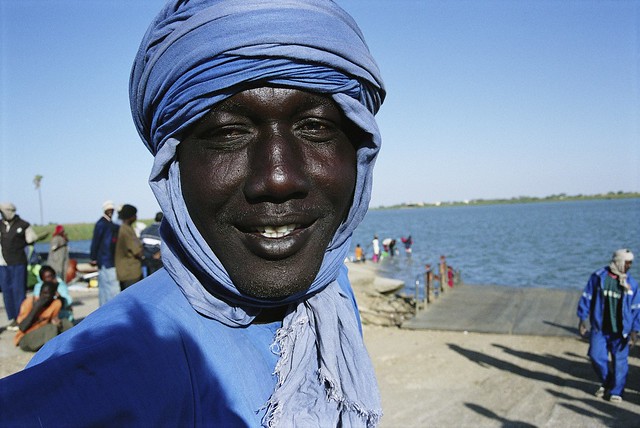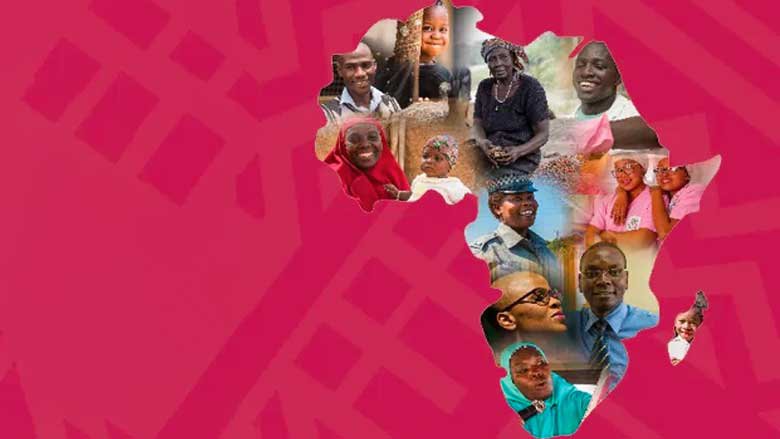The Republic of Congo (Congo-Brazzaville), located in Central Africa, covers 342,000 km2. Its population of 6.1 million people is largely young, with 47% being under age 18. More than half of the population lives in its two main cities ˇŞ Brazzaville and Pointe-Noire. The country is one of the least densely populated in Africa, with 14.8 inhabitants per square kilometer.
Covered mainly by tropical forests, the Republic of Congo is home to one of the largest areas of tropical peatlands, a fragile ecosystem that plays a crucial role in climate regulation. The oil sector accounts for about half of the countryˇŻs gross domestic product (GDP) and 80% of its exports, making it the third largest producer in Sub-Saharan Africa. The country also has a wealth of mineral resources that remain largely untapped.
Political Context
President Denis Sassou Nguesso was reelected in March 2021. He led the country for the first time from 1979 to 1992, returned to power in 1997, and has won all elections since 2002. The next presidential elections are scheduled for 2026. Since May 2021, the current Prime Minister, Anatole Collinet Makosso, who was reappointed twice, has been leading a government whose priorities include institutional, economic, financial, social, and inclusive governance.
Social Context
With a human capital index (HCI) of 0.42, the Republic of Congo is behind the average of 0.48 for its peer group of Lower Middle-Income Countries (LMICs). The country has made modest improvements in access to health and education but continues to face structural challenges. Infant mortality remains high at a rate of 32 deaths per 1,000 live births. By the end of primary education, only 30% of students are proficient in reading. Access to electricity stands at 67% of the population in urban areas compared to just 12.4% in rural areas. Access to clean water is another area where improvements are needed; 74% of the population has access to a clean water source, but this is significantly lower in rural areas at 46%, despite the countryˇŻs considerable hydrological resources.
The dynamics of social exclusion and drivers of fragility in the Republic of Congo are multidimensional and further exacerbated by poverty and inequality. These issues go beyond the spatial disparities between urban and rural areas, and are exemplified in the divide between population groups, with women, youth, persons with disabilities, and indigenous peoples (IPs) being the most vulnerable. In the 2021 international gender inequality index, the Republic of Congo was ranked 147 out of 170 countries, highlighting the extent of gender-based inequalities. Youth unemployment has also increased over the years and has reached around 42%, which puts additional strain on the countryˇŻs fragility and social challenges.
Economic Context
The Congolese economy experienced modest growth in 2024, primarily driven by the non-oil sectors, which expanded by an estimated 4%. This growth marked a significant milestone, as the GDP per capita returned to positive growth (0.3%) for the first time since 2015. As a result, poverty is estimated to have fallen marginally from 46.6 to 46.5% between 2023 and 2024. The economic expansion was underpinned by positive momentum in the agricultural, industrial (excluding oil), and services sectors.
Although the inflation rate decreased from 4.5% in 2023 to 3.8%, it still exceeds the CEMAC convergence criterion of 3%. The rise in prices has been fueled by increased production costs due to recurring power outages and fuel shortages. Although the inflation rate decreased in 2024, the inflationary pressure on food commodities in the markets due to rising fuel prices is concerning. This is because it further reduces the already very precarious purchasing power of households living in extreme poverty.
From 2020 to 2022, enhanced debt management practices, fiscal discipline, and rising oil revenues initially led to a decrease in the debt-to-GDP ratio from 103.5% to 86.6%. However, by the end of 2023, public debt as a percentage of GDP rose to 96.0%.
To address its cash flow tensions, the government launched the National Treasury Program to reprofile part of the regional debt by extending the maturities. As of September 2024, outstanding domestic securities amount to CFAF 2,314 billion (approximately USD 3.9 billion), with an average maturity of three years and 62.7% due for amortization by 2026. Through the NTOP, CFA 935.6 billion (approximately USD 1.6 billion) of regional debt was reprofiled with an extended of maturities, and a loan of CFA 250 billion (approximately USD 417 million) was partially used to cover the reprofiling costs. The NTOP successfully prevented payment incidents during the fourth quarter of 2024, reducing payment delays in the regional market to the three observed prior to the program.
The Congolese economy is expected to experience modest growth in the coming years with a poverty rate anticipated to gradually decline as GDP per capita rises. The Congolese economy is projected to grow by 3.8% in 2025 and maintain an average growth rate of 3.2% over the period 2026-2027, driven by both the non-oil and oil sectors.
Last Updated: Apr 07, 2025







